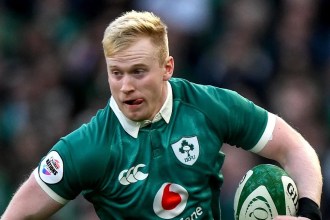Marie-Philip Poulin, a prominent figure in women’s hockey, recently made headlines not only for her exceptional skills on the ice but also due to her relationship with Laura Stacey, a fellow player in the Premier Hockey Federation (PHF). This article explores their partnership, both personal and professional, while highlighting the growing interest in women’s sports and the challenges faced by athletes in this domain.
### Who is Marie-Philip Poulin?
Marie-Philip Poulin is celebrated as one of the best hockey players globally. Born on March 28, 1991, in Beauceville, Quebec, she has represented Canada at multiple international tournaments, earning gold medals in the Winter Olympics and World Championships. But her impact extends beyond her athletic achievements; as a team captain, she embodies leadership and commitment in the sport.
### Laura Stacey: The Partner Behind the Player
Laura Stacey, born on January 20, 1995, in Ontario, is not only Poulin’s partner but also a standout athlete in her own right. An accomplished forward, Stacey plays for the Montreal-based team, La Victoire. Her family’s rich hockey heritage includes notable figures like her great-grandfather, King Clancy, who is inducted into the Hockey Hall of Fame, and her grand-uncle Terry Clancy, who also played in the NHL.
Stacey’s addition to the Montreal team alongside Poulin exemplifies the growing female presence in professional hockey. Both women were among the first players contracted by the team’s general manager, Danièle Sauvageau, cementing their roles as trailblazers in the league.
### On and Off the Ice: A Unique Dynamic
The relationship between Poulin and Stacey represents both a personal and professional alliance that resonates within the sports community. They share not only a passion for hockey but also the challenges and triumphs of high-level competition. Their partnership serves as an inspiring narrative, showcasing the importance of support and understanding in any high-stakes environment.
Their dynamic extends into their professional commitments, as both athletes navigate the rigors of training, competition, and public scrutiny. Their shared experiences enhance their connection, fostering an environment where both can thrive.
### The Significance of Their Relationship in Women’s Hockey
As role models, Poulin and Stacey challenge traditional perceptions of female athletes. They create visible pathways for younger women aspiring to enter the sport, illustrating that success can be achieved both individually and collectively. Their story is a testament to the growing recognition of women in sports and the importance of representation.
### Challenges in Women’s Sports
Despite advancements, women’s sports still face significant challenges, including disparities in coverage, sponsorship, and pay compared to their male counterparts. While athletes like Poulin and Stacey work hard to elevate the sport, broader systemic issues remain prevalent.
The recent establishment of professional leagues like the PHF is a step towards addressing these challenges. However, change is slow, and advocacy remains crucial in ensuring female athletes receive the recognition and resources they deserve.
### The Impact of Social Media
In today’s digital age, social media plays an essential role in the visibility of athletes. Both Poulin and Stacey leverage their platforms to connect with fans, promote their brand, and advocate for women’s sports. Their influence stretches beyond the rink, engaging audiences and fostering a community that supports female athletes.
By sharing insights into their personal lives and professional journeys, they inspire others while highlighting the challenges women face in sports. This transparency helps humanize athletes and builds a more engaged fan base.
### Future Directions for Women’s Hockey
The future of women’s hockey is bright, with increased support from fans, sponsors, and organizations. The partnership between Poulin and Stacey exemplifies what the future holds: collaboration, support, and camaraderie among female athletes. Upcoming seasons will undoubtedly showcase their talents and potentially lead to more milestones for both players and the sport as a whole.
Moreover, as more women break into leadership roles within sports organizations, the governance of women’s hockey is poised for progressive changes that can improve the structure and support for female athletes.
### Conclusion
Marie-Philip Poulin and Laura Stacey represent the next generation of women in hockey. Their relationship not only highlights personal connection but also embodies the collective resolve required to advance women’s sports. As they continue to excel on the ice, their story serves as an inspiration for countless aspiring athletes, proving that with dedication, skill, and support, barriers can be broken down.
In summation, their journey underscores the importance of recognition, equality, and representation in sports. Through visibility and advocacy, they contribute to a movement that demands a significant shift in how women’s athletics are viewed and valued. With their continued efforts, the future of women’s hockey is indeed promising, and fans around the world eagerly anticipate what comes next for this dynamic duo.
Source link









